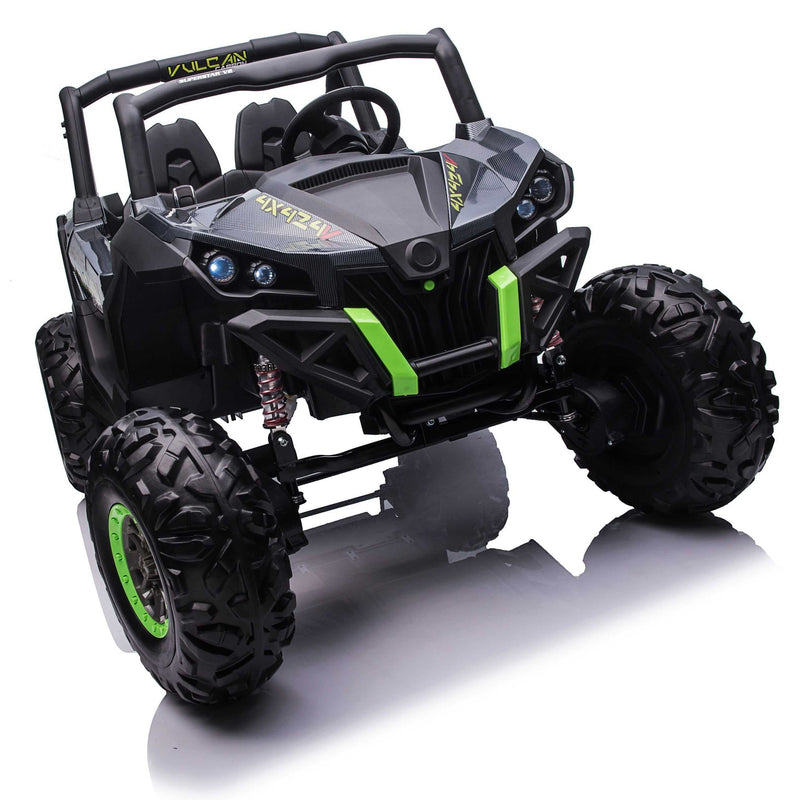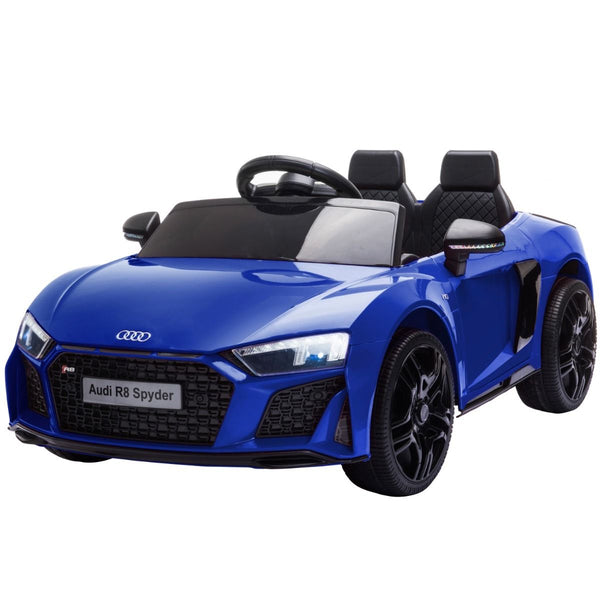Best Tips To Selecting Remote Control Childrens Cars
Wiki Article
What Should I Know About Battery Life And The Charging Time Of An Electric Ride-On The Kids' Car?
Understanding the battery's lifespan and the charging time of an electric ride-on children car is crucial to ensuring uninterrupted playtime and optimal performance. What do you need to know - Battery Type
Most electric ride-on vehicles are rechargeable and utilize lithium-ion or lead-acid batteries. Lithium ion batteries have a greater battery lifespan than lead acid and are charged faster.
Battery Capacity
The battery's capacity is stated in amp hours (Ah) and watt hours (Wh). This is how long an electric ride-on could run on a single charging. The capacity of the battery is crucial because it determines how long the car's ride-on capabilities last prior to recharging.
Run Time -
The duration of an electrical ride-on car is how long it can run continuously on one charge. This depends on a number of elements such as the battery, the motor along with the terrain and the weight of the rider.
The average run time of electric ride-ons ranges between 30 to 2 hours. However, certain batteries with high capacity could have longer time-to-run.
Charging Time -
The charging duration is how it takes to recharge a fully depleted battery. Charging time can vary depending on the capacity of the battery, the specifications of the charger and the method of charging.
In general the time to charge an electric ride-on vehicle is between 8 to 12 hours. Certain models can charge faster, especially those that use lithium-ion batteries.
To ensure safety and a long-lasting battery life, it's important to charge the battery in accordance to the specifications of the manufacturer. The battery's overcharging or undercharging will impact its performance and longevity.
Charge Method -
Most electric vehicles have a charging cord that plugs directly into a household outlet. Some models can have rapid charging capabilities or a smart charger that monitors the battery's charge status and adjusts the charging rate accordingly.
Check that the charger connectors and port are compatible with the charger that comes with the ride-on car in order to protect the battery or the electrical system.
Additional Batteries
Certain electric ride-on vehicles may provide the option of purchasing extra batteries or spare batteries to allow for extended playtime. It is possible to replace worn-out batteries with new ones which are fully charged so you'll have less time between sessions.
By understanding the battery life and charging times of an electric ride-on kids' vehicle it is possible to ensure that your children have enjoyment and uninterrupted playtime while exploring their environment. The battery's performance and longevity can be extended by regularly charging the batteries and following correct charging methods. See the best ride on toys for site info including childs ride on car, a toy car, toy the car, ride electric car, electric car ride, electric rideons, cars pedal car, toy in car, car for toy, ride of car and more. .

How And Why Are There Different Levels Of Skill For Electric Ride-On Automobiles?
Electric ride-on vehicles typically have different speeds and control options to meet the needs of different levels of skill as well as provide a secure and enjoyable riding experience for children. These features are intended for safety and enjoyment.
Different children have different levels of capability and confidence in driving in ride-on vehicles. Parents can adapt the speed limit of the ride-on car to their child's ability by providing a range of speed settings. This decreases the likelihood for accidents and collisions.
Children who are just beginning to learn prefer the slower speed settings and older children or those who have more experience are more comfortable using the faster speeds.
Gradual Learning Curve -
With a variety of speed settings Electric ride-on vehicles help children develop their driving skill gradually. Beginning drivers should begin with lower speed settings to become comfortable with the controls before increasing to faster speeds.
As your child gets better at driving, you are able to increase the speed at which they drive. It gives them a sense that they are progressing and achieving.
Parental control -
A few electric ride-on vehicles come with parental control options that allow parents to limit the speed limit of their vehicle remotely. This feature offers parents security knowing that they are able to intervene and alter the speed as necessary to ensure their children's safety.
Models can include parental control features such as remote speed limiters or emergency stop buttons.
Adaptability
As children grow, their interests and abilities might change. Electric ride-ons with a variety of speeds are able and able to adapt to changes in the child's needs.
Children can speed up as they grow in experience and gain confidence. This will make for an exciting and challenging ride. For children who are younger or have less experienced friends parents may decide to lower the speed.
Customization
The possibility to modify and personalize your riding experience is achievable with a variety of speeds. Children can select the speed that they are comfortable with and offers the desired level of thrill.
Some electric rides-on cars have additional controls, such as the ability to adjust brake sensitivity or acceleration. They allow the driving experience be tailored to specific needs.
Electric ride-ons with their various speed settings and control features ensure a safe and adaptable riding experience for youngsters from all ages and levels. These features are designed to encourage excitement, confidence, as well as improvement in skills while parents remain in control of their children and intervene if necessary. View the top JCB ride on digger for site tips including toy car for car, childrens ride on, electric rideons, toy with car, toy cars toy car, two seater childrens electric cars, remote control childrens electric cars, childrens electric cars, car toy car toy, ride of car and more. .

What Should I Consider Before Buying An Electric Kid's Car? What Are The Pros And Cons?
When you are considering purchasing an electric children vehicle There are many aspects to take into consideration to ensure that you select the best model for your child's needs and preferences. Here are a few key aspects to take into consideration and some information on price as well as size and pros and cons.
When deciding on an electric vehicle to your child, consider the size and the age of your child. For children who are smaller or younger small and lightweight models are often the best choice. However older or larger children might require vehicles with more room to accommodate them.
The weight and size of the Car -
Electric cars for kids are available in a variety of sizes, from small micro-sized models, to larger-scale replicas of real cars. The size and weight of the car your child is driving should be based on their age, size and capacity. Also consider how much space is available for play and storage.
Price Variation
Prices of electric kids' cars can vary widely depending on factors such as the size, features, brands and the build quality. Prices for small-sized cars vary between $50 and $200. For larger cars, prices can be up to $800.
The pros and cons of -
Pros -
Electric children's cars can provide hours of entertainment and imagination for your kids. This allows them to feel the thrill in driving their own vehicle.
Motor Skill Development. An electric vehicle is an excellent way to help your child improve their coordination, spatial awareness, and fine motor skills.
Outdoor Play - Electric cars encourage outdoor play and physical activity by encouraging exploration and exercise.
Realistic Features- Many electronic children's cars come with realistic features, including working headlights and horn sounds. They also have support for MP3 players, which improves the overall experience.
Cons -
Electric cars that are of high-quality cost a lot, particularly when you buy licensed replicas.
Battery life - Electric vehicles utilize rechargeable batteries that power their motors however, these batteries can be limited in their runtime and will require frequent recharge.
Safety Issues Electric vehicles are prone to safety hazards like crashes, falls, and entrapment. This is especially true in the event that the vehicle isn't utilized with care and supervision.
Maintenance and Assembly - Some electric vehicles will require assembly at the point when they arrive. They may also require regular maintenance, such as cleaning, battery treatment and parts replacements or repairs.
Features and Accessories
Think about the features that come with the electric kids car. This includes working headlights, horns, parental remote controls, seat belts and storage compartments. Choose a car with the features and options that will best fit your child's needs.
The best electric children's car for you child will ultimately depend upon factors like the size and age of your child, as well as their interests and budget. Make sure you look into and compare different models, read reviews, and think about the pros and cons prior to making a decision. See the recommended JCB ride on digger kidscars.co.uk recommendations for blog tips including car toy car toy, 2 seater electric cars, childs car toy, kiddies cars, riding digger, car toy car toy, car toy toy, childs electric ride on car, digger ride, kids electric cars and more. .
